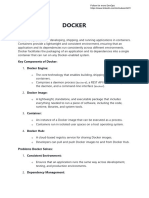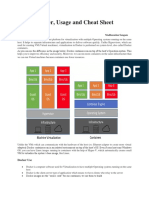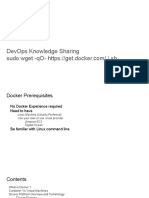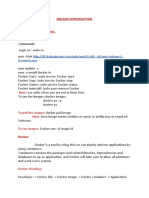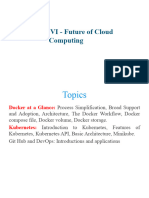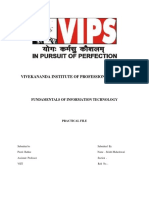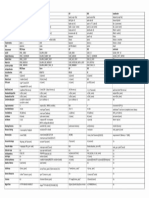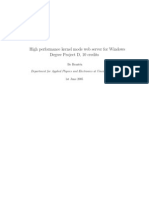0% found this document useful (0 votes)
18 views5 pagesCloud 2
Docker is a PaaS product that utilizes OS-level virtualization to deliver software in isolated packages called containers, which are more resource-efficient than virtual machines. Key components include Docker Engine for container management, Docker Images as templates for containers, and Docker Hub as a cloud repository for sharing images. The document also details the use of Dockerfiles for image creation, the client-server architecture of Docker, and various commands for managing containers and images.
Uploaded by
raghavkapoor670Copyright
© © All Rights Reserved
We take content rights seriously. If you suspect this is your content, claim it here.
Available Formats
Download as PDF, TXT or read online on Scribd
0% found this document useful (0 votes)
18 views5 pagesCloud 2
Docker is a PaaS product that utilizes OS-level virtualization to deliver software in isolated packages called containers, which are more resource-efficient than virtual machines. Key components include Docker Engine for container management, Docker Images as templates for containers, and Docker Hub as a cloud repository for sharing images. The document also details the use of Dockerfiles for image creation, the client-server architecture of Docker, and various commands for managing containers and images.
Uploaded by
raghavkapoor670Copyright
© © All Rights Reserved
We take content rights seriously. If you suspect this is your content, claim it here.
Available Formats
Download as PDF, TXT or read online on Scribd
/ 5





